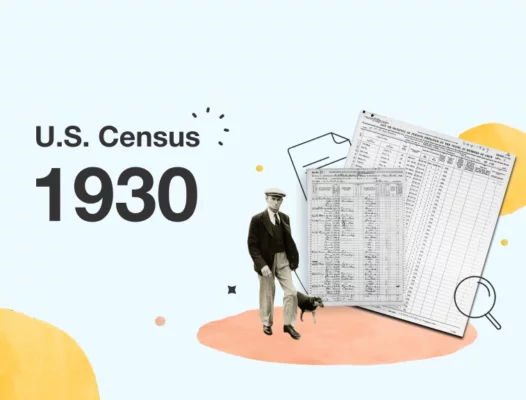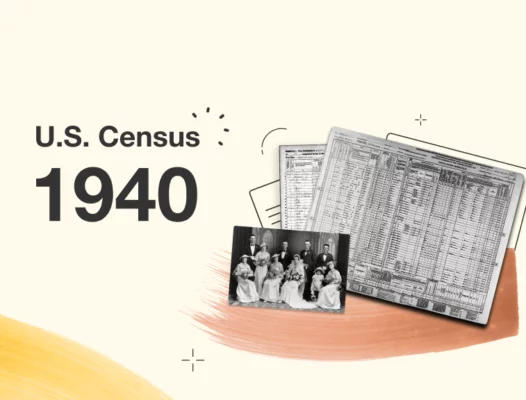The 1920 U.S. Census: Discover Your Family History from 1920

The 1920 U.S. Census was taken in April of 1920, at the close of a tumultuous decade in American history. The early 1910s had found the United States the most prosperous nation in the world, with many of its residents enjoying a high standard of living. As 1920 drew nearer, however, the United States was drawn into two great crises: after trying to avoid getting involved in World War I, the U.S. finally joined the fight in 1917, losing more than 100,000 troops before the armistice agreement was signed in 1918. The Spanish flu pandemic was close to follow, claiming the lives of around 675,000 U.S. citizens. At the time the census was taken, prohibition had been in effect for a few months already, and women were just on the verge of finally getting the vote: the Nineteenth Amendment would be passed in August of that year.
The war and plague likely contributed to a significant drop in population growth during this decade, from 21.02% between 1900–1910 to 14.96% between 1910–1920. The 1920 census counted 106,021,537 residents in the United States in April of that year.
What can the 1920 Census show us about our ancestors?
The 1920 Census records contain important details on people living in the United States, including:
- Name
- Age
- Place of residence
- Place of birth
- Relationship to head of household
- Gender
- Race
- Education and literacy
- Immigration and citizenship
- Mother tongue and mother tongue of parents
- Occupation
- Whether they owned or rented their home
See below for a full list of the questions included on the 1920 Census.
What changed from the 1910 Census to the 1920 Census?
The number of questions on the 1920 Census decreased slightly, from 32 in the 1910 Census to just 29. Among the questions appearing in 1910 that were omitted from this census were:
- Duration of present marriage
- Number of children born to each woman, with separate columns for number of children born and number of living children
- Unemployment information
- Whether the person was a Civil War veteran
- Disabilities: blindness, deafness, and mutism
New questions in this census included the mother tongue not only of the person interviewed, but also of their parents.
Searching the 1920 Census on MyHeritage
While census records are available to the public on the National Archives website, searching on MyHeritage offers invaluable additional benefits:
- Advanced search capabilities: Using MyHeritage’s search engine, you can search for your ancestors according to any criteria and not just home address or enumeration district. MyHeritage’s sophisticated search algorithms can even identify nicknames and name variations from other languages.
- Easily flip between records within the family: MyHeritage allows you to easily flip between census records of individuals in the same family group. Family members are listed on the record page, and you can click their names to go to their records.
- Explore related records: When you are viewing records on MyHeritage, you’ll see additional historical records that mention the person you are researching. Our database includes more than 16 billion records and is constantly growing.
- Receive automatic Record Matches: When you build a family tree on MyHeritage, you won’t even need to search actively. MyHeritage finds historical records that mention the people in your family tree and delivers them straight to your inbox.
- Extract new information straight to your family tree: Extracting information from historical records and placing it on your online family tree is as simple as a few clicks on MyHeritage.
Get more tips by watching Preparing for the 1950 Census: How-to Search the U.S. Census Records:
What does a 1920 Census record look like?
Below is a sample record from the 1920 Census. This record features great American novelist F. Scott Fitzgerald at the age of 23. The Great Gatsby author was living with his parents, his sister, and servant. He can be found on line 46. Click the image to zoom in.
Questions included in the 1920 Census form
The 1920 Census contained 29 questions as follows:
PLACE OF ABODE:
- Street, avenue, road, etc.
- House number (in cities and towns)
- Number of household in order of visitation
- Number of family in order of visitation
NAME:
- Name of each person whose place of abode on January 1, 1920, was in this family.
RELATION:
- Relationship of this person to the head of the family
TENURE.
- Home owned or rented.
- If owned, free or mortgaged.
PERSONAL DESCRIPTION
- Sex.
- Color or race.
- Age at last birthday.
- Single, married, widowed, or divorced.
CITIZENSHIP:
- Year of immigration to the United States.
- Naturalized or alien.
- If naturalized, year of naturalization.
EDUCATION:
- Attended school any time since Sept. 1, 1919.
- Whether able to read.
- Whether able to write.
NATIVITY AND MOTHER TONGUE
PERSON
- Place of birth.
- Mother tongue.
FATHER
- Place of birth.
- Mother tongue.
MOTHER
- Place of birth.
- Mother tongue.
- Whether able to speak English.
OCCUPATION AND INDUSTRY:
- Trade, profession, or particular kind of work done, as spinner, salesman, laborer, etc.
- Industry, business, or establishment in which at work, as cotton mill, dry goods store, farm, etc.
- Employer, salary or wage worker, or working on own account.
What stories about your family might you discover in the 1920 U.S. Census? Search the collection on MyHeritage today to find out!

![Census record of F. Scott Fitzgerald [Credit: MyHeritage 1920 United States Federal Census]](https://cm.myheritage.com/wp-content/uploads/2022/02/FScottFitzgerald1920small.jpg)


